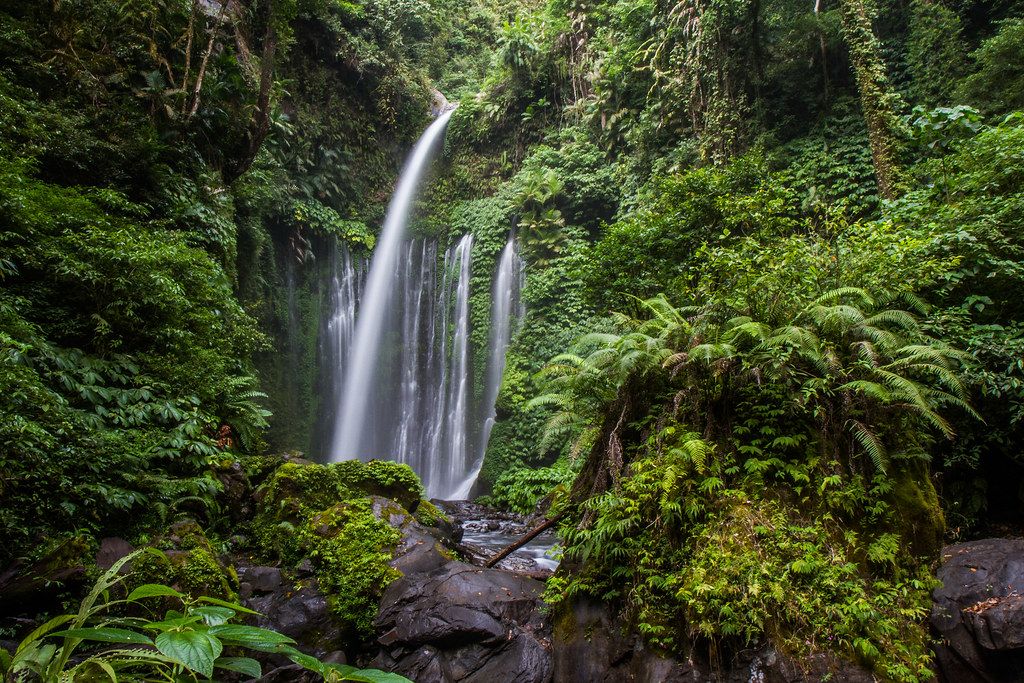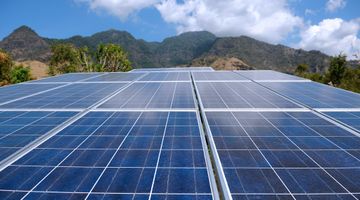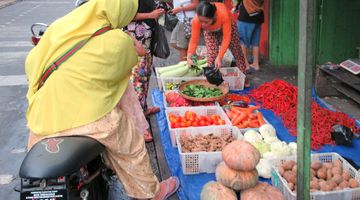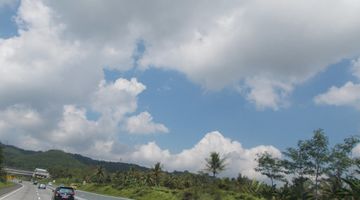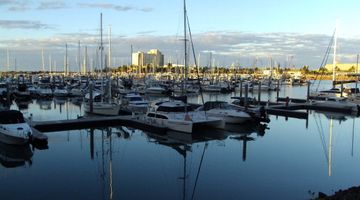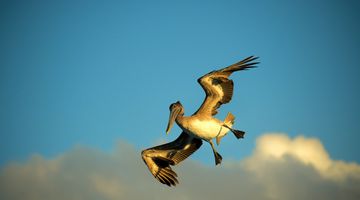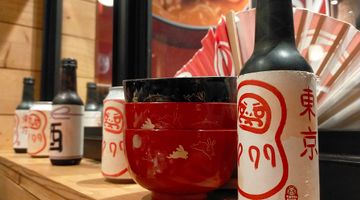Weather and the Best Time to Visit Indonesia
Climate in Indonesia
Indonesia straddles the equator which means that it has a monsoonal climate. The seasons are basically grouped into ‘wet’ and ‘dry’ seasons, although it is hot throughout the year. Some parts of Indonesia are a little cooler than others, such as mountains and volcanoes that sit at a higher elevation, so if you want to go trekking expect the weather to be chillier. That said, it never gets very cold in Indonesia so you can visit all year round, depending on whether you are prepared to brave some of the wetter weather.
Seasons in Indonesia
There are two seasons in Indonesia, namely the rainy season and the dry season. As a general rule the wet season lasts from October to May and the dry season runs from June to September, although there is no guarantee that it will not rain during the dry season, or that you won’t experience dry weather in the rainy season.
The rainy season is driven by monsoon storm systems, one of which is the southeast monsoon from June to September and the northwest monsoon that blows in from December to May. One thing to note however is that some parts of the country have the opposite weather patterns to the rest of Indonesia. If you are planning to visit Papua or Maluku, for example, then the rainy season lasts from approximately May to October and the dry season runs from November to April.
It is also important to note that Indonesia is made up of some 17,000 islands and some of these, such as Sulawesi are very large. This means that opposite ends of the same island may have very different and localized weather patterns, so the ‘wet’ and ‘dry’ seasons mentioned above should really only be treated as a rough guideline. Depending on where you are going, it is best to look at a detailed weather forecast for that area, as the weather could vary widely from one city to another, even if you are only visiting one island in Indonesia.
The weather patterns are also not set in stone, and some years see very little annual rainfall while others experience storms even during the so-called ‘dry’ season. With that in mind, it is best to pack a waterproof poncho and some sunscreen whenever you decide to visit.
Rainy season in Indonesia
During the rainy season it can rain every single day. Rain is usually heavy although it doesn’t usually last very long. Rainstorms may last an hour but in that time can cause widespread flooding due to their intensity. It is unlikely that during the rainy season it will rain for a full day, although it can happen.
If you want to visit some of Indonesia’s national parks then you should absolutely avoid the wet season. Flooding can be widespread and there is a risk of other natural disasters such as landslides. If you are planning to go trekking to places such as volcanoes like Mount Agung in Bali or Mount Sibayak in Sumatra then it is not recommended that you do so during the wet season and some guides may refuse to take you. At the very best you can expect a rather damp trip.
If you are planning to keep to the main cities in Indonesia such as Jakarta, Bandung, Surabaya and Yogyakarta, then you can visit during the rainy season, although many cities have a problem with flooding and you may find that it takes longer to get around the city than usual.
If you are planning a beach holiday in places like Lombok or Bali, then the rainy season is also not a good option as much of your time spent sunbathing may be rained off. The monsoon systems also tend to churn up the seas around Indonesia bringing with them huge amount of rubbish during the rainy season.
The dry season is usually hot, depending on where you are. Usually you can expect clear skies and even in the dry season it is usually quite humid in Indonesia due to its position in the Tropics.
The best time to go to...
Kalimantan:
Kalimantan is large and the weather can be variable. As a general rule it rains from March to May and from November to January. The main dry season is from June to September so if you want to visit spots like Tanjung Puting National Park then August and September are good months to pick. The hottest months in Kalimantan are usually May to August and temperatures can range from 23°C to 33°C throughout the year.
Sumatra
The weather in Sumatra varies, as with most islands in Indonesia. If you plan to visit Medan and North Sumatra (including up into Aceh Province) then you can expect rain throughout the year. That said, the official wet season here is from October to January. If you are planning to visit the orang utans and go trekking in spots like Bukit Lawang then you may want to skip this time. If you want to go to Palembang and South Sumatra then the best time to visit is from April to October which is when the weather is driest. It is usually around 28°C in Sumatra throughout the year but temperatures can peak to around 33°C during the dry season.
Java
The dry season in Java is from May to September and you can expect it to be hot and sunny at this time. This means that it is a good time to visit famous trekking spots like Mount Bromo or Mount Ijen. The rainy season is from November to March, although if you stick to the big cities then you can still enjoy things like city tours and there are many indoor activities to enjoy in spots like Jakarta such as museums and aquariums. As with the rest of Indonesia, temperatures average around 28°C on Java but you can expect it to be cooler if you are trekking to places like Mount Bromo where temperatures can get down to 16°C.
Bali
The dry season in Bali runs from April to September and you can expect plenty of sunny days and blue sky at this time. The best time to visit is from May onwards as this is also the shoulder season before peak season in July and August so there are fewer crowds. The wet season is from October to March and it can rain every day, although usually only for a few hours. On average temperatures fluctuate between around 26°C and 28°C on Bali. If you are planning to hike one of Bali’s volcanoes such as Mount Batur or Mount Agung then you can expect it to be cooler, especially at night.
Sulawesi
Sulawesi has different weather patterns depending on where you choose to visit. If you are around Toraja and the southern part of Sulawesi then you can expect it to be wet from November to April. In Manado however and the north of the island, it can rain pretty much all year round, although it is usually dry from July to October. As a general rule Sulawesi is hotter than other parts of Indonesia and temperatures can climb to 34°C.
Nusa Tenggara
Nusa Tenggara is the term used for a cluster of islands including Lombok, Flores and Sumba. The dry season here is from April to September and this is also a good time to visit if you want to go diving as this is when the visibility is at its best. If you want to climb Mount Rinjani on Lombok then this is also the best time to do so as there is less risk that the trip will be rained off. It rains across Nusa Tenggara from October to March so if you are planning to visit spots like Komodo National Park then it is best to avoid these months. On average temperatures are between 27°C-29°C.
Maluku
The dry season in Maluku runs from November to March and this is also a good time to go diving although note that the seas around the Banda Islands can be rather choppy and visibility is poor around January. From June to August there can be heavy rains and many of the dive resorts in Maluku shut for the season, so this is best avoided, even if you are not planning on diving as you may struggle to find a hotel or resort that is still open.
Papua
The best time to visit Papua is from April to September which is also the dry season. Outside this period it can rain every day in Papua, especially in places like Pulau Biak and most of the main activities here are outdoors so it can make for quite a difficult and disappointing trip if you visit during this time. On average you can expect temperatures of around 29°C across much of Papua.
Travellers’ Tips
-
It rarely gets cold in Indonesia, so you will not need to bring cold weather clothes unless you are planning to hike one of the country’s many volcanoes or mountains. These include spots like Mount Agung and Mount Batur in Bali, or the Ijen Crater on Java. Even then, you only really need some sweaters and boots with socks, and if you plan to camp out then sleeping bags are usually provided.
-
If you visit in the rainy season then you will find that there are a higher number of mosquitoes than at other times of the year, but you should pack mosquito repellent whenever you plan to visit Indonesia as mosquitoes are prevalent all year round and can carry the dengue virus.
-
During the wet season you may also want to bring waterproof clothing such as a poncho or rain jacket and if you are planning to go trekking in places where it may be very damp such as national parks then you should also invest in some leech socks.
-
During the dry season in Indonesia you should make sure to bring plenty of sunscreen as the skies are usually clear and you can burn very quickly and very easily, even if you are just outside for a short period of time.
-
A large, wide brimmed hat is also a good idea if you are planning to walk outside in national parks or even on a city tour as the sun can be fierce throughout the day.
-
If you are planning to go swimming or diving then you should constantly reapply sunscreen throughout the day and it is also a good idea to wear a rash vest or long sleeved swimming attire if you plan to be in the water all day.
-
In the dry season heatstroke can be a serious issue in Indonesia so make sure to cover up if possible and also make sure to drink plenty of water to avoid dehydration.

